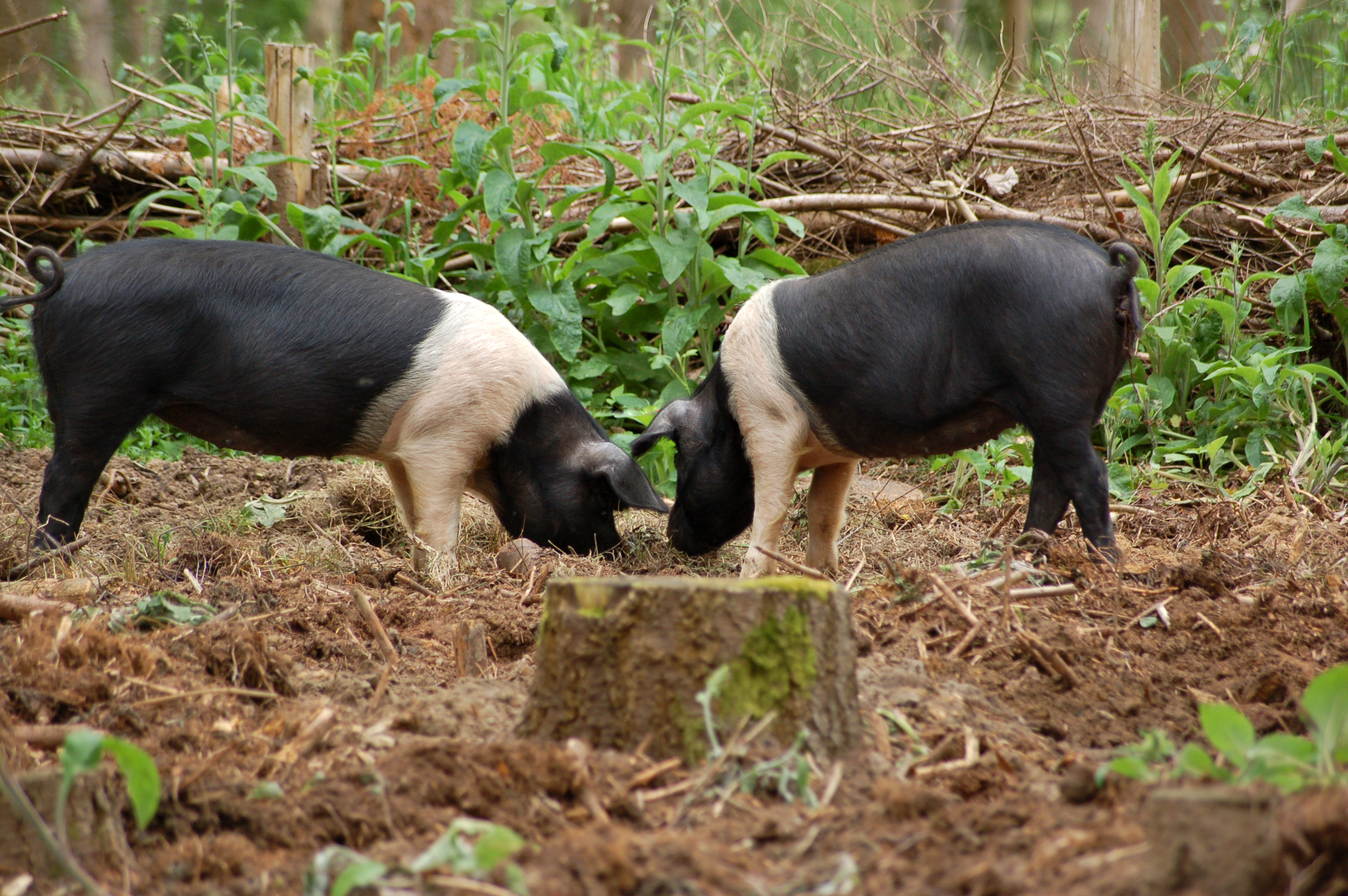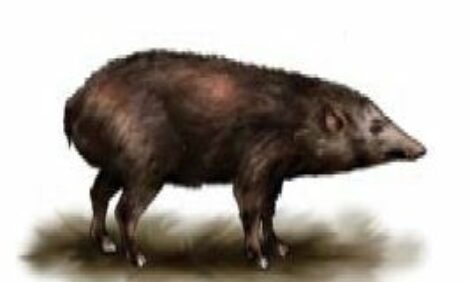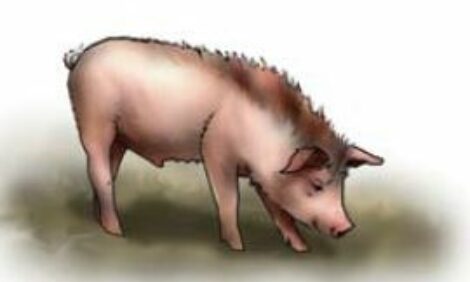



Bazna
In 1872 a Berkshire was crossed with a Mangalitsa, and the result was the first of the Bazna breed. In 1885, and after 1900, Berkshire boars were imported from England and were used to improve and homogenise the Bazna breed during its formation and development. From time to time Yorkshire and Sattelschwein breeds were used for improvement, as well as Wessex and Hampshire. The Bazna was recognised as a distinctive swine breed in 1958.

The Bazna is black and red with a white stripe around the middle. It is a highly adaptable breed, and will eat just about anything it is given, as well as breeding quickly with an average of nine piglets per litter. A sow can farrow between eight and twelve litters over their breeding lifetime. It immediately became popular because of these traits, especially as it bred quickly when compared to it's native, maternal breed. The Bazna pig presents medium height at the withers, and a body structure characteristic for fat meat production. The head is medium with slightly concave profile. The ears are also medium, forward placed, and the neck is short, wide and strongly attached. The trunk is of average width, quite deep and almost round, the top line of the body is slightly convex. This is a breed which is average in terms of size in almost every way. When this is coupled with the speed it breeds at, it's dietary requirements being essentially 'anything', and a quick growth time, it is easy to see why it is so popular.
Bazna piglets are about 2.75lbs at birth, growing to about 135lbs in six months, and 290lbs in twelve. Whilst young pigs are fit for early fattening, and are usually 220lbs at slaughtering age, the best results for meat are had at 330lbs, when the lean/fat ratio is at its best. The Bazna breed is highly adapted for natural breeding and growth conditions; it is not very demanding, and varied food sources can be successfully used from roots to pasture, potatoes and corn, as well as food wastes, though they can be part-intensively farmed with some success due to the toughness of the breed.








